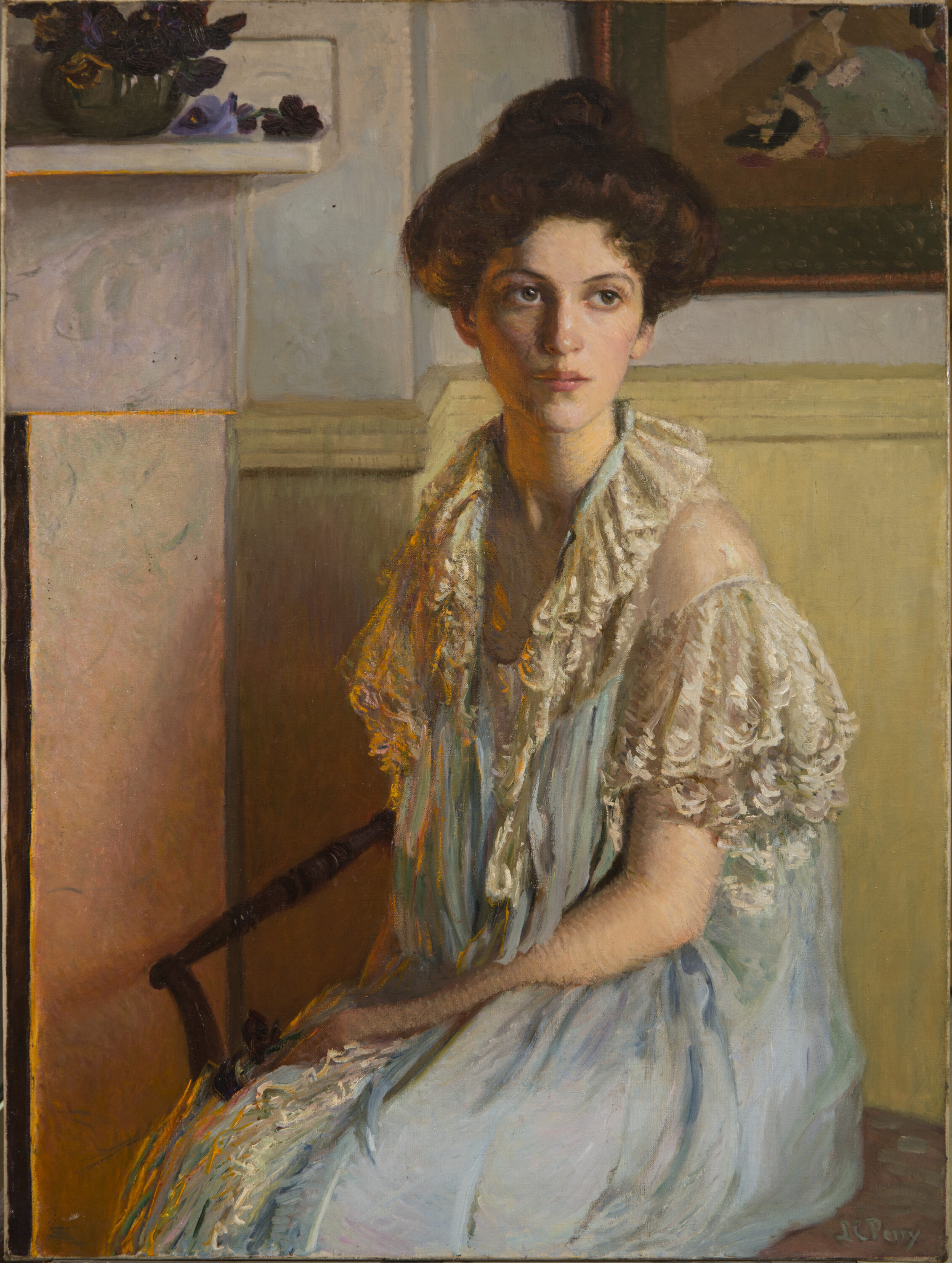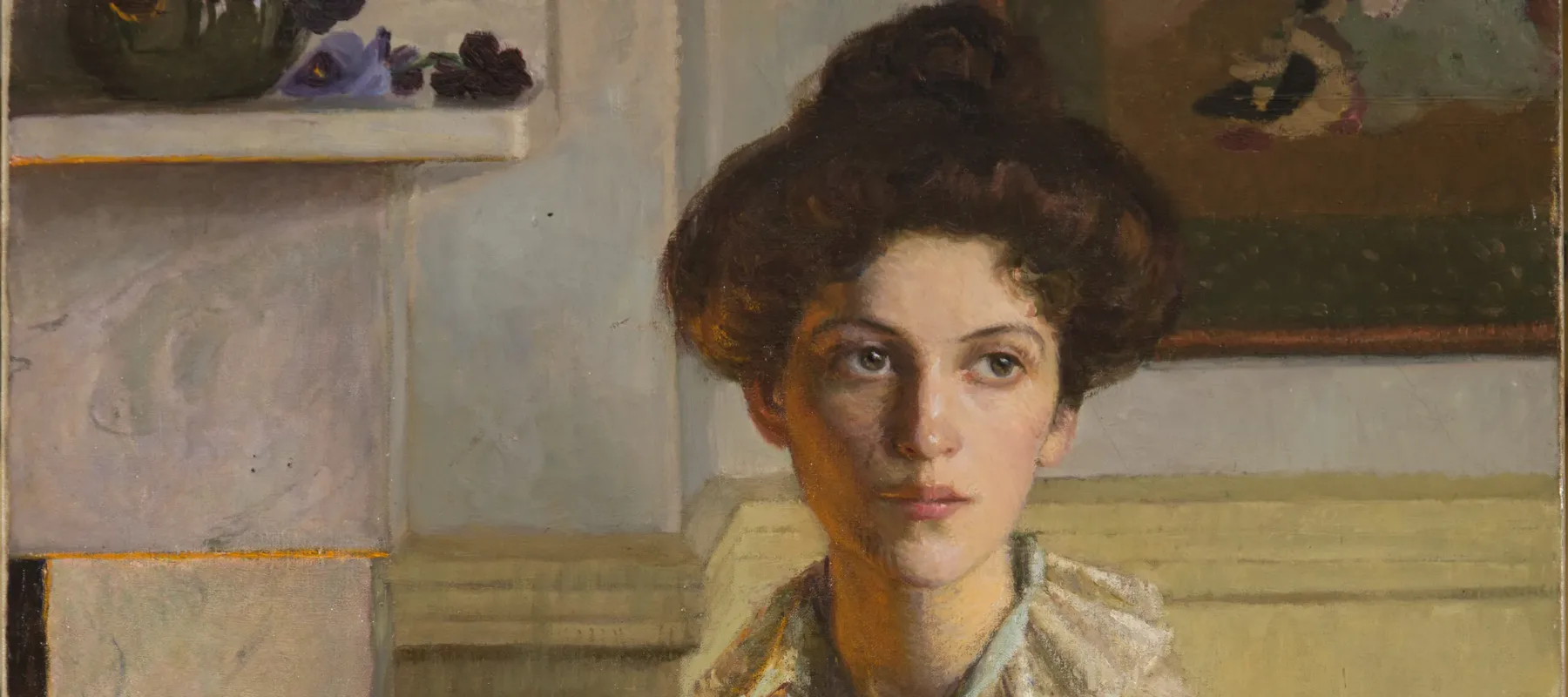Lady with a Bowl of Violets (ca. 1910) has been called one of NMWA’s “best-loved works.” Lilla Cabot Perry (1848–1933) painted this Impressionist portrait of an unknown sitter more than 100 years ago, however, the origins of the painting’s title are still unclear. The descriptive yet simple name presents a complex question: Is the work wrongly titled?
In 1990, NMWA presented one of the first major exhibitions of Perry’s paintings in more than 20 years. As part of that exhibition, former NMWA curators Meredith Martindale and Pamela Moffat published a catalogue that worked to expand the scholarship surrounding Perry beyond her interaction with the Impressionist movement and close friendship with Claude Monet.

In Lilla Cabot Perry: An American Impressionist, Martindale and Moffat examined Lady with a Bowl of Violets and declared something surprising: the “violets” are not violets at all, but pansies. The scholars note that many of Perry’s works have only been attributed titles in recent years and suggest that in this instance the late designation has “led to a total misrepresentation.”
According to Martindale and Moffat, the titles of many of Perry’s works are missing or ambiguous. The artist’s account book disappeared at some point, often leaving others to guess at dates and titles. The researchers suggest “Perry herself was not consistent . . . and some of her paintings have as many as three different titles during her lifetime.”
The title of Lady with a Bowl of Violets is questioned for several additional reasons relating to the lives of Perry and her husband, Thomas. Perry also wrote poetry; her collection of poems, The Jar of Dreams, includes several pansy references that are noted in the 1990 exhibition catalogue: “Pansies, white pansies and purple ones/Deep as the love I gave to you, my flower.” Similarly, the catalogue notes Thomas Perry had a similar affinity for the flower. He is quoted: “Pansies are, I think, my favorite flower, they have such a mischievous wink and their colours, especially the purple, touch my heart. . . .” This heartfelt attachment to the flower suggests the current title may indeed miss the mark, as Perry was certainly familiar enough with the flowers to tell them apart.
Further, grounds for a potential mistitling can be revealed through considering the identity of the painting’s sitter. Martindale and Moffat suggest the young woman in Lady with a Bowl of Violets is a professional model. However, when compared to a portrait of Perry’s daughter, Alice in a White Hat (ca. 1904), it is hard to ignore a resemblance. The personal meanings of pansies as well as the possible family relationship between the sitter and artist offer a more intimate understanding of the work—one that could be better understood with a more appropriate title.
However, a biographical and visual analysis does not fully explain how this possible misattribution could have occurred. A scientific review of pansies and violets presents additional elements to consider when deciphering the current title. The “violet” is a term used for the smaller flowering annuals of the viola genus that includes more than 550 different species. A “pansy” is included within the viola family but refers exclusively to a large-flowering, multi-colored variety. So, can you tell the difference? Has Ms. Perry presented pansies? Is the title simply the product of an amateur horticulturist? Or does a flower by any other name smell just as sweet?

